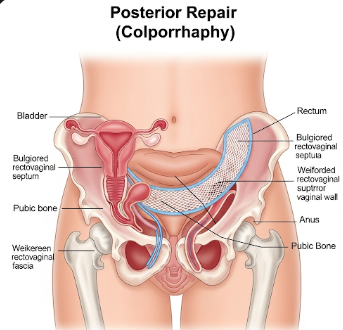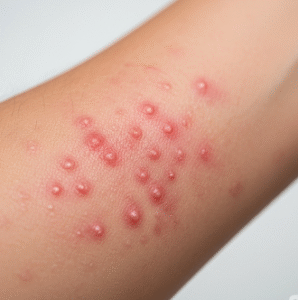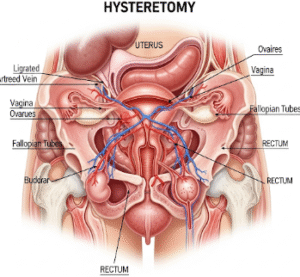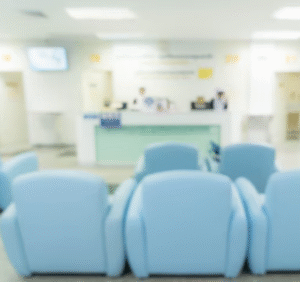Overview
Posterior repair, also known as posterior colporrhaphy, is a surgical procedure designed to repair the back wall of the vagina, commonly to treat rectocele (vaginal wall prolapse). This condition occurs when the rectum pushes against the vaginal wall, causing discomfort, urinary or bowel issues, and sexual dysfunction.
South Korea is recognized for advanced gynecological surgery centers, experienced urogynecologists, and minimally invasive surgical techniques, making posterior repair safe and effective with optimal outcomes.
What is Posterior Repair?
Posterior repair involves reconstructing and reinforcing the vaginal wall and surrounding supportive tissue to correct prolapse. Key aspects include:
✔ Restores normal vaginal anatomy and function.
➔ Strengthens connective tissue and fascia behind the vaginal wall.
● Reduces symptoms: Improves bowel movements, sexual function, and comfort.
★ Minimally invasive approaches available: Some cases can be repaired with vaginal or laparoscopic techniques.
The procedure is recommended for women experiencing symptomatic rectocele or posterior vaginal wall prolapse affecting quality of life.
What are the Benefits?
Posterior repair provides several advantages:
✔ Relieves vaginal bulging and pressure.
➔ Improves bowel function and reduces straining.
● Enhances sexual comfort and function.
★ Minimally invasive options reduce recovery time.
➤ Long-term correction of posterior wall prolapse.
Procedure Details
1) How should I prepare for Posterior Repair?
Preparation ensures safety and optimal results:
✔ Medical evaluation: Comprehensive gynecological assessment, imaging if needed.
➔ Medication review: Adjust blood thinners or other medications.
● Bowel preparation: Laxatives or enemas may be recommended to empty the rectum before surgery.
★ Patient counseling: Discuss procedure steps, expected outcomes, potential risks, and recovery plan.
➤ Consent: Ensure understanding of post-operative care and activity restrictions.
2) What happens during the procedure Posterior Repair?
Posterior repair is performed under regional or general anesthesia:
✔ Incision: Made along the posterior vaginal wall to access weakened tissue.
➔ Tissue repair: Excess tissue is removed and fascia is reinforced with sutures.
● Vaginal wall closure: Incision is closed with absorbable sutures for minimal scarring.
★ Support restoration: Some cases may use mesh or graft for additional support, though often avoided in favor of native tissue repair.
➤ Procedure duration: Typically lasts 60–90 minutes depending on complexity.
Korean surgeons emphasize precise tissue handling and minimally invasive techniques for effective repair and faster recovery.
3) What happens after Posterior Repair?
Post-operative care focuses on healing, comfort, and preventing recurrence:
✔ Hospital stay: Usually 1–2 days; outpatient repair may be possible.
➔ Pain management: Mild to moderate discomfort treated with analgesics.
● Activity restrictions: Avoid heavy lifting, straining, or sexual activity for 6–8 weeks.
★ Follow-up: Regular check-ups to assess healing and functional improvement.
➤ Long-term maintenance: Pelvic floor exercises recommended to strengthen supportive tissues.
Risks / Benefits
Possible Risks:
✔ Infection at surgical site
➔ Bleeding or hematoma
● Dyspareunia (pain during intercourse) temporarily
★ Recurrence of prolapse
➤ Rare injury to rectum or surrounding organs
Major Benefits:
✔ Restores vaginal anatomy and reduces prolapse symptoms
➔ Improves bowel function and sexual comfort
● Minimally invasive approach reduces hospital stay and recovery time
★ Long-term effectiveness when combined with pelvic floor exercises
➤ Enhances overall quality of life
Recovery and Outlook
✔ Immediate recovery: Patients usually discharged within 1–2 days; outpatient procedures possible for select cases.
➔ Mild pain and swelling: Expected during the first week, managed with medication.
● Activity resumption: Light activities after 1–2 weeks; sexual activity after 6–8 weeks.
★ Follow-up: Regular pelvic exams to monitor tissue healing and function.
➤ Long-term outcome: Most women experience lasting symptom relief and improved quality of life.
When To Call the Doctor
Contact your doctor immediately if you notice:
✔ Fever or signs of infection
➔ Persistent bleeding or unusual discharge
● Severe pain not relieved by medication
★ Difficulty with urination or bowel movements
➤ Recurrence of vaginal bulging or prolapse
Best Korea Option / Process
South Korea provides expert posterior repair care with:
✔ Leading hospitals: Samsung Medical Center, Asan Medical Center, Seoul National University Hospital.
➔ Minimally invasive vaginal or laparoscopic techniques for faster recovery.
● Experienced urogynecologists and gynecological surgeons skilled in tissue reconstruction.
★ Comprehensive care: Pre-op assessment, surgery, post-op follow-up, and pelvic floor rehabilitation.
➤ Medical tourism support: Translation, travel assistance, and continuity of care for international patients.
✅ Highlights:
✔ Posterior repair corrects rectocele and posterior vaginal wall prolapse
➔ Restores function, comfort, and vaginal anatomy
● Minimally invasive with shorter recovery time
★ Risks include infection, bleeding, or prolapse recurrence
➤ Korean hospitals offer advanced techniques, experienced surgeons, and comprehensive post-operative care













